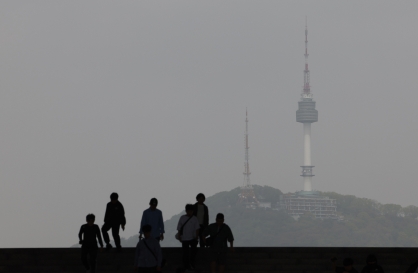South Korea was set to launch a multipurpose satellite later Thursday, with the Russian government giving its final approval for the scheduled launch from its Yasny launch base, officials here said.
The Korea Multipurpose Satellite 5 (KOMSAT-5) is scheduled for launch at 8:39 p.m. (11:39 p.m. KST), using Russia's Dnepr, a space launch vehicle converted from a Soviet-era intercontinental ballistic missile.
"No problems have been detected so far, and both the satellite and its launch vehicle are ready to be launched," said Lee Sang-ryool, director of aerospace systems laboratory at the Korea Aerospace Research Institute (KARI).
It was partly cloudy with occasional gusts of wind here in Yasny, located about 1,800 kilometers southeast of Moscow, but officials here said the weather should not be a problem.
"The weather is expected to clear up, and the wind does not matter unless it moves at a speed of 25 meters per second, which pretty much is a hurricane," said an official from International Space Company Kosmotras, a joint venture of Russia, Ukraine and Kazakhstan that is operating the Dnepr launch program.
The official, speaking on condition of anonymity, noted that the Dnepr launch vehicle is little affected by weather conditions, especially wind, as it is launched from a silo.
The satellite, also known as the Arirang 5, will be South Korea's fourth multipurpose satellite, but the first with synthetic aperture radar that will provide images of 1-meter resolution.
Synthetic aperture radar is an advanced form of side-looking airborne radar that uses radio waves to detect relative motions between an antenna and its target region to identify any distinct variations, in turn, providing a finer spatial resolution than is possible with conventional radars or cameras.
KARI, the developer of the KOMSAT-5, said the radar will enable the country to monitor the entire Korean Peninsula and other parts of the world even at night and regardless of weather conditions.
"High-resolution radar images from the multipurpose Arirang 5 satellite will also make valuable contributions in various other areas, such as ocean management, disasters and land monitoring," the KARI said in a press release.
KARI plans to launch a new satellite, the KOMSAT-3A, with an infrared radar next year, enabling the country to also monitor underground activities, such as volcanoes or earthquakes, by detecting changes in temperature.
The KOMSAT-5, developed indigenously by South Korea, was originally set to be launched two years earlier, but the launch was delayed due to what officials from KARI and Kosmotras called "political issues" with the Russian government.
Lee from KARI's aerospace systems laboratory noted such a long delay could have affected the satellite and its capabilities, but that his institute has done its utmost to ensure that the satellite did not age.
"There are problems of aging and corrosion when a satellite sits for such a long period of time, but we have checked every part that might be a problem and replaced all the parts with a lifespan," he told reporters here.
The satellite cost 238.1 billion won (US$212 million) since 2005 to build. It was moved to the Yasny launch base in July.
The satellite will circle the earth 15 times a day in a sun synchronous orbit with an average altitude of 550 kilometers. It has a mission lifespan of five years, according to KARI. (Yonhap News)








![[AtoZ Korean Mind] Does your job define who you are? Should it?](http://res.heraldm.com/phpwas/restmb_idxmake.php?idx=644&simg=/content/image/2024/05/06/20240506050099_0.jpg&u=)









